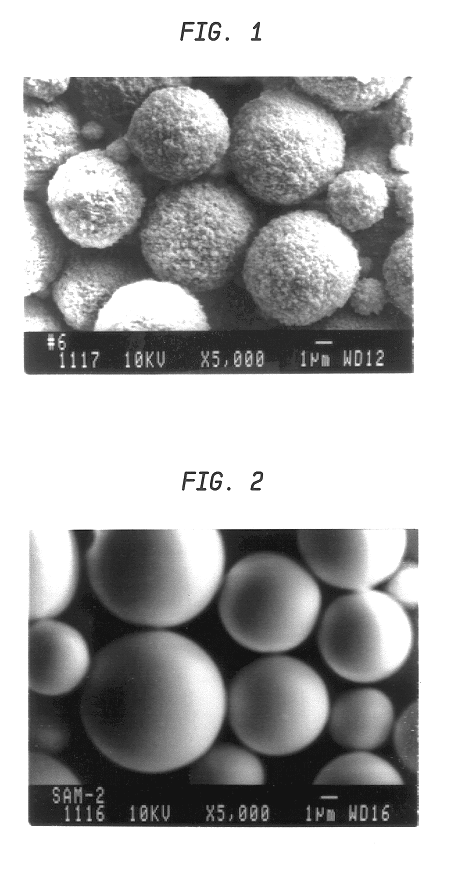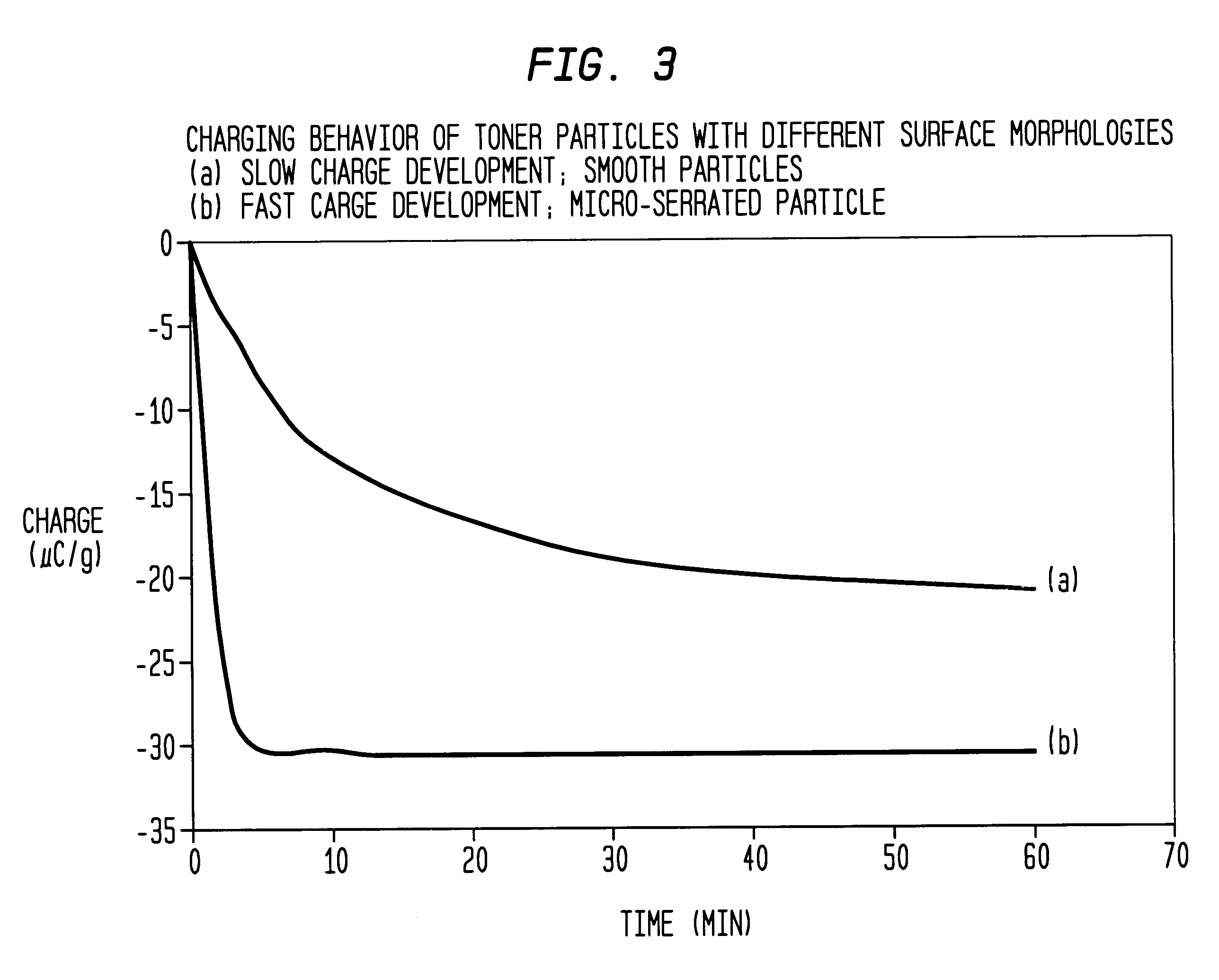Micro-serrated color toner particles and method of making same
a color toner and micro-serration technology, applied in the field of micro-serration color toner particles, can solve the problems of difficult to make particles smaller, difficult to obtain resolutions better than about 600 dots/inch, and entrapment of dispersed medium inside the toner particles, so as to facilitate the overall comminution process, improve the flow characteristics of toner particles, and reduce the melt viscosity of resin compositions
- Summary
- Abstract
- Description
- Claims
- Application Information
AI Technical Summary
Benefits of technology
Problems solved by technology
Method used
Image
Examples
example 1
A cyan polyester toner composition comprising a polyester resin, a cyan pigment and a charge control agent was prepared by the following procedure. Polyester resin was a propoxylated bisphenol-A polyester resin (Fine Tone.TM. 382ES commercially available from Reichold Chemicals, Incorporated, Research Triangle Park, N.C.), the pigment was C. I. Pigment Blue 15:3 with Color Index Constitution Number 74160 (Heliogen.TM. Blue D7100 obtainable from BASF Corp., Charlotte, N.C.) and the charge control agent was a negative charge control agent (Bontron.TM. E-88 available from Orient Chemical Corporation, Springfield, N.J.).
Into a 2000-ml round-bottom flask equipped with an impeller-type agitator and a condenser, 500 grams of polymer resin, 25 grams of the pigment, 10 grams of the CCA, 150 grams of dimethylformamide (available from Aldrich Chemical Company, Milwaukee, Wis.) as the vaporizable plasticizer (processing aid) component and 15 grams of aluminum trihydorxide (available from Aldric...
example 2
Into a 2000-ml round-bottom flask equipped with an impeller-type agitator and a condenser, 500 grams of polymer resin, 25 grams of the pigment, 150 grams of dimethylformamide (available from Aldrich Chemical Company, Milwaukee, Wis.) as the processing aid, that is, vaporizable plasticizer component and 15 grams of aluminum trihydorxide (available from Aldrich Chemical Company, Milwaukee, Wis.) as a CCA complement were charged. The content was agitated to form a mixture and then heated to 150.degree. C. under a total reflux condition. The resin mixture was maintained at the temperature under an agitation of 50 rpm impeller rotation for 60 minutes after it had attained a sufficient fluidity. The mixture became transparent indicating that the additives were finely dispersed in the resin melt.
500 grams of 1:1 mixture of Isopar-L.RTM. and Isopar-V.RTM. (available from Exxon Chemical Company, Houston, Tex.) as the immiscible solvent component and 25 grams of Ganex V220 (available from ISP...
example 3
A magenta polyester toner composition was prepared using C. I. Pigment Red 81:3 (Rhodamine YS PMA commercially available from Magruder Color Company, Elizabeth, N.J.) in place of the C. I. Pigment Blue 15:3 of the cyan toner composition of Example 1 by following the same procedure as in Example 1.
The resulting magenta toner composition contained 90.9 percent by weight of the polyester resin, 4.5 percent by weight of C. I. Pigment Red 81:3 and 1.8 percent by weight of E-84 charge control agent. When the particle diameter was determined, the volume average particle diameter was 5.0 microns and the span 0.8. Scanning electron microscopy examination of the toner particles showed that the toner particles were substantially spherical with coarse surface texture. The surface roughness index as measured by the BET isotherm method was 1.9.
PUM
 Login to View More
Login to View More Abstract
Description
Claims
Application Information
 Login to View More
Login to View More - R&D
- Intellectual Property
- Life Sciences
- Materials
- Tech Scout
- Unparalleled Data Quality
- Higher Quality Content
- 60% Fewer Hallucinations
Browse by: Latest US Patents, China's latest patents, Technical Efficacy Thesaurus, Application Domain, Technology Topic, Popular Technical Reports.
© 2025 PatSnap. All rights reserved.Legal|Privacy policy|Modern Slavery Act Transparency Statement|Sitemap|About US| Contact US: help@patsnap.com



